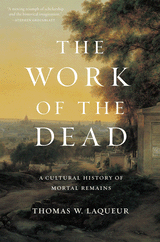by Robert J. Kett
The work of a father and son—archaeologist Robert Heizer and land artist Michael Heizer—is the subject of Robert Kett’s analysis of cross-generational practices of knowing and making. While the elder Heizer is known as a methodological and technological innovator in Cold War archaeological practice, his son is a prominent figure in an art movement highly critical of modern forms of knowledge and experience. Looking past this apparent disjuncture, this article examines the unexpected continuities in both men’s methods, as evidenced in Robert Heizer’s study of the Olmec site of La Venta in the 1960s and Michael Heizer’s massive late twentieth-century earthworks inspired by ancient societies. 
The essay begins:
In February 2012, a 340-ton boulder made an eleven-day journey from its source in a Riverside quarry to the Los Angeles County Museum of Art (LACMA). The huge stone had been hand selected by land artist Michael Heizer for use in his work Levitated Mass. A massive rerealization of a piece first conceived in the late 1960s and completed on a smaller scale in 1982, the work would suspend the boulder atop a concrete trench in LACMA’s “backyard,” inviting reflections on not only the work’s monumentality but also its relation to the Los Angeles urban context against which it was placed. Power lines and traffic signals had to be temporarily disassembled to make room for the almost 300-foot rig as it delivered its massive cargo. Streets were lined with spectators, news crews, and public utility employees all along its more than 100-mile route. The sheer size of Heizer’s intervention and the infrastructural interruptions it required led to a degree of public attention rare for other works of art. Levitated Mass, now completed and in place, has become famous and can be found in newspaper articles and blog entries, YouTube videos, and endless photos where subjects hold the massive rock in the palms of their hands through tricks of perspective.
Two years earlier, Heizer’s work was also evident in another monumental event at LACMA. The exhibition Olmec: Colossal Masterworks of Ancient Mexico brought ceramics, carved jades, and monumental statuary from archaeological sites in southern Mexico to Los Angeles. Two colossal basalt heads included in the exhibition had been set on angular, patinaed steel supports designed by Heizer. The supports continued a dialogue between the ancient works of the Olmec and the contemporary art world that began as soon as the Olmec were rediscovered in the early twentieth century. Heizer had been asked to build these supports as part of a larger effort to promote synergies across the museum’s modern and ancient offerings, but more importantly as a means of acknowledging a peculiar coincidence of lineage. His father, Robert Heizer, was an archaeologist who investigated the Olmec site of La Venta for two decades. Read more …
Michael Heizer’s show “Altars” is on view at Gagosian Gallery, New York, through July 2.
ROBERT J. KETT is a doctoral candidate at the University of California, Irvine, and currently works in the Getty Research Institute’s Department of Architecture and Contemporary Art. Beginning in the fall of 2015, he will be a Postdoctoral Research Fellow at the Max Planck Institute for the History of Science in Berlin.
 If you missed it today, you can still listen to Terry Gross’s interview of Tom Laqueur at Fresh Air at NPR.org. Gross talks with Laqueur, a member of Representations‘ editorial board since the journal’s founding in 1983, about his new book The Work of the Dead: A Cultural History of Mortal Remains (Princeton, 2015).
If you missed it today, you can still listen to Terry Gross’s interview of Tom Laqueur at Fresh Air at NPR.org. Gross talks with Laqueur, a member of Representations‘ editorial board since the journal’s founding in 1983, about his new book The Work of the Dead: A Cultural History of Mortal Remains (Princeton, 2015).
